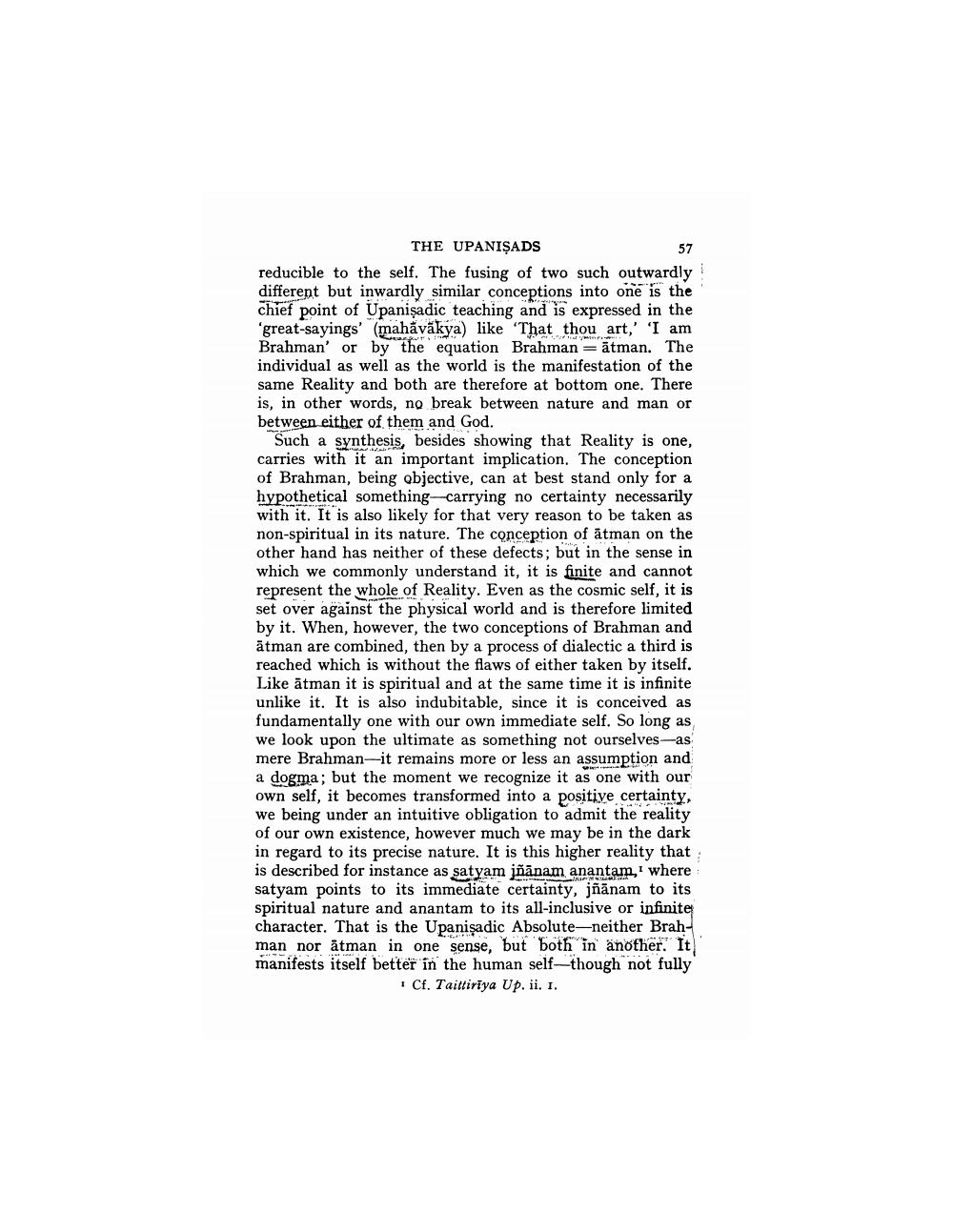________________
THE UPANIŞADS
57 reducible to the self. The fusing of two such outwardly different but inwardly similar conceptions into one is the chief point of Upanisadic teaching and is expressed in the 'great-sayings' (mahāvākya) like 'That thou art,' 'I am Brahman' or by the equation Brahman = ātman. The individual as well as the world is the manifestation of the same Reality and both are therefore at bottom one. There is, in other words, no break between nature and man or between either of them and God.
Such a synthesis, besides showing that Reality is one, carries with it an important implication. The conception of Brahman, being objective, can at best stand only for a hypothetical something-carrying no certainty necessarily with it. It is also likely for that very reason to be taken as non-spiritual in its nature. The conception of atman on the other hand has neither of these defects; but in the sense in which we commonly understand it, it is finite and cannot represent the whole of Reality. Even as the cosmic self, it is set over against the physical world and is therefore limited by it. When, however, the two conceptions of Brahman and atman are combined, then by a process of dialectic a third is reached which is without the flaws of either taken by itself. Like ātman it is spiritual and at the same time it is infinite unlike it. It is also indubitable, since it is conceived as fundamentally one with our own immediate self. So long as we look upon the ultimate as something not ourselves-as mere Brahman-it remains more or less an assumption and a dogma; but the moment we recognize it as one with our own self, it becomes transformed into a positive certainty, we being under an intuitive obligation to admit the reality of our own existence, however much we may be in the dark in regard to its precise nature. It is this higher reality that: is described for instance as satyam jñānam anantam, where satyam points to its immediate certainty, jñānam to its spiritual nature and anantam to its all-inclusive or infinite character. That is the Upanişadic Absolute-neither Brahman nor ātman in one sense, but both in another. It manifests itself better in the human self-though not fully
1 Cf. Taittiriya Up. ii. 1.




